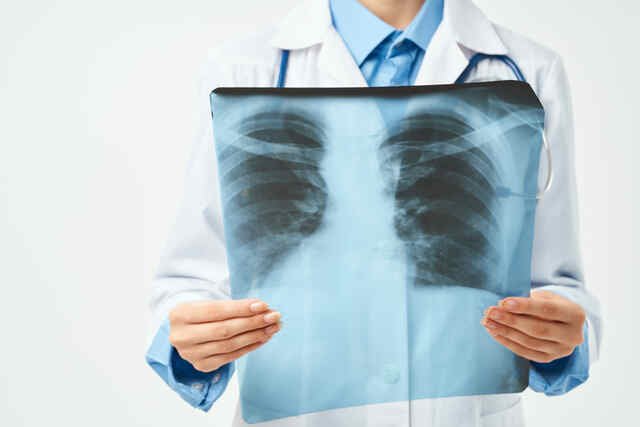Understanding Pulmonology: Comprehensive Guide to Respiratory Health
- Dr Hrushikesh Vaidya
- 0 Comments
Understanding Pulmonology: Comprehensive Guide to Respiratory Health
Pulmonology is a crucial branch of medicine that focuses on the diagnosis, treatment, and prevention of diseases related to the lungs and respiratory system. As our lungs are responsible for providing oxygen to the body and removing carbon dioxide, maintaining lung health is essential for overall well-being. In this blog post, we will explore the key aspects of pulmonology, common respiratory conditions, diagnostic techniques, treatments, and the importance of seeking a pulmonologist’s expertise. By the end, we will also provide guidance on finding the best pulmonology doctor in Thane and why Dr. Hrushikesh Vaidya is a top choice for respiratory care.
What is Pulmonology?
Pulmonology is the medical specialty that focuses on the respiratory system, primarily the lungs and the airways. Pulmonologists are doctors trained to diagnose and treat diseases affecting the lungs, such as asthma, chronic obstructive pulmonary disease (COPD), pneumonia, tuberculosis, lung cancer, and sleep apnea. Pulmonology encompasses a wide range of conditions, from common respiratory infections to rare and serious diseases, such as interstitial lung disease and pulmonary fibrosis.
The specialty not only involves treatment but also includes preventive care, such as advising patients on how to avoid respiratory illnesses, how to manage chronic diseases, and how to maintain optimal lung function over time.
Why Pulmonology is Essential for Lung Health
Our lungs are vital organs that enable us to breathe. Pulmonology plays a critical role in safeguarding lung health, diagnosing diseases early, and providing treatments that help individuals live healthier lives. Pulmonologists employ various diagnostic tools and therapeutic interventions to address issues related to the lungs and airways.
Given that many respiratory diseases can worsen over time without proper care, pulmonologists offer essential long-term management for chronic conditions and prevent complications. Preventive care, early intervention, and personalized treatment plans can significantly improve a patient’s quality of life.
Common Respiratory Conditions Treated in Pulmonology
1. Asthma
Asthma is a chronic condition that affects the airways, causing them to become inflamed and narrowed. This leads to difficulty breathing, wheezing, and coughing. Asthma can be triggered by allergens, infections, or environmental factors. Pulmonologists diagnose asthma through spirometry and other tests, and they help patients manage it with medications like inhalers, oral steroids, and lifestyle adjustments.
2. Chronic Obstructive Pulmonary Disease (COPD)
COPD is a progressive lung disease, most commonly caused by smoking, that makes it difficult to breathe. It is characterized by airflow obstruction that worsens over time, leading to symptoms such as chronic cough, wheezing, and shortness of breath. Pulmonologists diagnose COPD through pulmonary function tests and may recommend treatments like bronchodilators, inhaled steroids, and pulmonary rehabilitation to improve lung function.
3. Pneumonia
Pneumonia is an infection that causes inflammation of the air sacs in the lungs. It can be caused by bacteria, viruses, or fungi, and it leads to symptoms such as fever, chest pain, difficulty breathing, and coughing. Pulmonologists treat pneumonia with antibiotics, antivirals, or antifungal medications, depending on the cause, and they may provide supportive care to help manage symptoms.
4. Tuberculosis (TB)
Tuberculosis is a bacterial infection that primarily affects the lungs but can also spread to other parts of the body. TB is contagious and can cause symptoms like persistent cough, chest pain, and fatigue. Pulmonologists treat TB with a combination of antibiotics, and they also monitor patients for potential complications during the long course of treatment.
5. Pulmonary Fibrosis
Pulmonary fibrosis is a condition where lung tissue becomes scarred and thickened, making it difficult for the lungs to function properly. This condition can result from various causes, including environmental exposures, autoimmune diseases, or idiopathic origins (where the cause is unknown). Pulmonologists use imaging techniques and lung function tests to diagnose pulmonary fibrosis and recommend treatments such as antifibrotic medications, oxygen therapy, and pulmonary rehabilitation.
6. Sleep Apnea
Sleep apnea is a disorder in which breathing stops and starts repeatedly during sleep, leading to poor-quality sleep and a range of symptoms, including fatigue, headaches, and irritability. Pulmonologists help diagnose sleep apnea using sleep studies (polysomnography) and may recommend treatments such as continuous positive airway pressure (CPAP) therapy or lifestyle changes to improve breathing during sleep.
7. Lung Cancer
Lung cancer is a leading cause of death worldwide and occurs when abnormal cells in the lungs grow uncontrollably. Pulmonologists are involved in the early detection, diagnosis, and management of lung cancer, which includes diagnostic imaging (such as CT scans), biopsies, and collaboration with oncologists for treatment plans that may involve surgery, chemotherapy, or radiation.
8. Interstitial Lung Disease (ILD)
ILD refers to a group of diseases that affect the interstitial tissue of the lungs, causing scarring and inflammation. This condition can be caused by a variety of factors, including environmental exposures, infections, and autoimmune diseases. Pulmonologists play a key role in diagnosing ILD through imaging and biopsy and may offer treatments that include corticosteroids, immunosuppressive therapy, or oxygen therapy.
How Pulmonologists Diagnose Respiratory Conditions
Pulmonologists rely on a variety of diagnostic tools to evaluate the health of the lungs and airways. Some of the most common diagnostic tests include:
1. Pulmonary Function Tests (PFTs)
Pulmonary function tests are a group of tests that measure how well the lungs work. They help diagnose conditions like asthma and COPD. These tests include spirometry (which measures airflow), lung volume tests, and diffusion capacity tests.
2. Imaging Tests
Imaging tests, such as chest X-rays and CT scans, allow pulmonologists to examine the structure of the lungs and identify signs of infection, inflammation, or scarring. CT scans, in particular, provide detailed images and help diagnose conditions like lung cancer and pulmonary fibrosis.
3. Bronchoscopy
Bronchoscopy is a procedure in which a thin tube with a camera is inserted into the airways to examine the lungs and collect tissue samples for biopsy. It is used to diagnose conditions like lung cancer, infections, and unexplained coughs.
4. Arterial Blood Gas (ABG) Test
An ABG test measures the levels of oxygen and carbon dioxide in the blood, helping pulmonologists evaluate how well the lungs are oxygenating the blood. This test is often used for patients with severe respiratory conditions.
5. Sleep Studies
For patients with suspected sleep apnea or other sleep-related breathing disorders, pulmonologists may recommend a sleep study (polysomnography). This test monitors various body functions during sleep, including breathing, heart rate, and oxygen levels.
Conclusion
Pulmonary health is essential, and seeing the right pulmonologist can help you manage your respiratory condition effectively. When choosing a Pulmonology doctor in Thane, ensure they have the right experience, access to advanced diagnostic tools, and a patient-centered approach to care. For the best pulmonology doctor in Thane, Dr. Hrushikesh Vaidya stands out as a trusted and reliable option for comprehensive respiratory care.
Related Posts

Understanding Pulmonary Fibrosis: Causes, Symptoms, Treatment, and Management
- Dr Hrushikesh Vaidya
- April 29, 2025
Understanding Pulmonary Fibrosis: Causes, Symptoms, Treatment, and Management Pulmonary fibrosi ..

Is Asthma a Communicable Disease?
- Dr Hrushikesh Vaidya
- October 10, 2025
Is Asthma a Communicable Disease? No, asthma is not a communicable (infectious) disease. You ca ..



